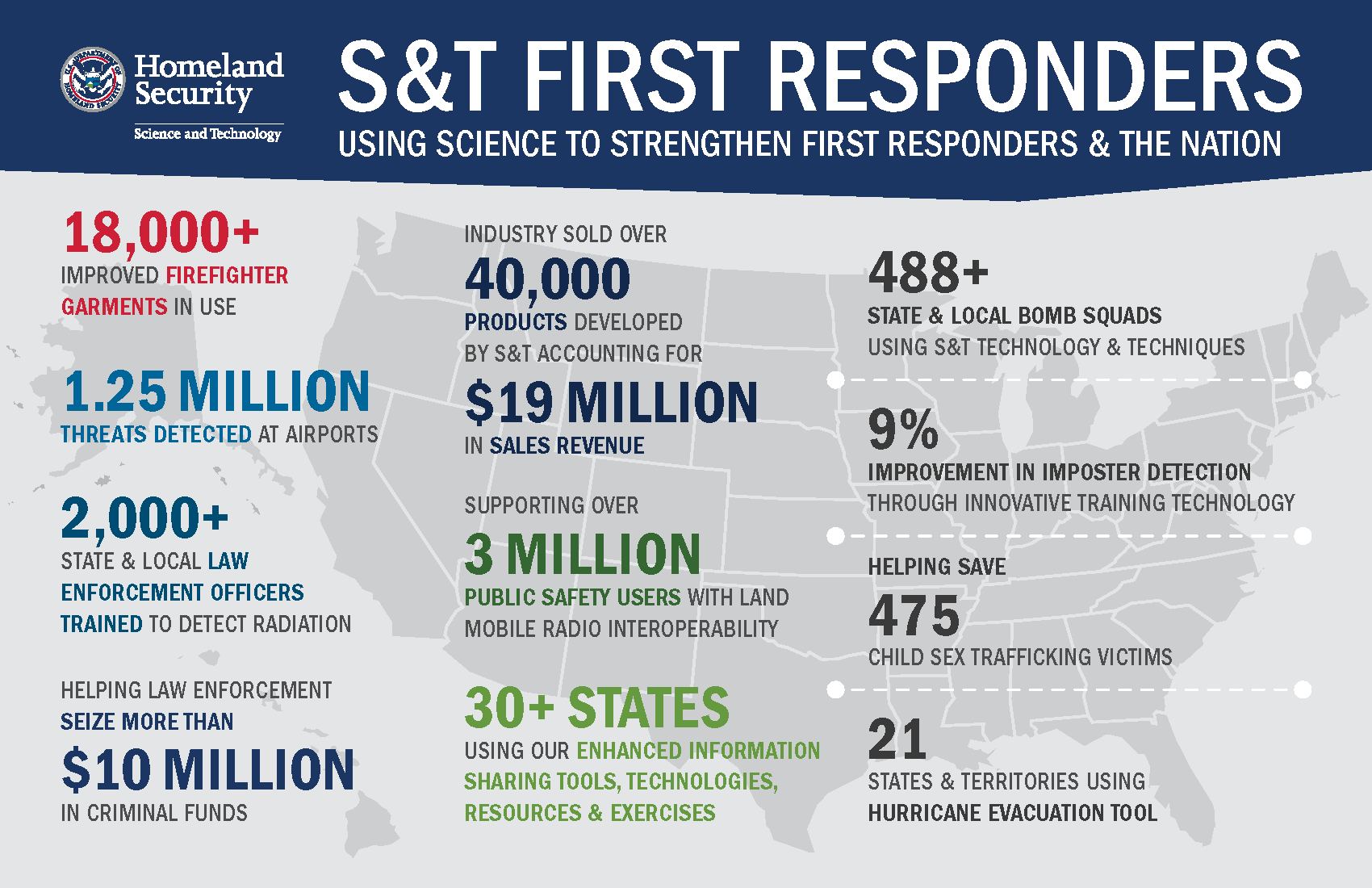
“DHS has taken the steps to go and ask the first responders ‘What are you facing? What’s concerning you? And what are the capability needs, improvements that you need that will help to do the job better?’ We’re not telling them ‘Hey, we have this widget’, or ‘We think you should do this.’ We’re actually asking the people out in the field ‘What’s your experience telling you? What’s your knowledge telling you?’ And ‘Is there something that could make it better so that you can do your jobs better at home?’”

These are the words of Paul McDonagh, the DHS Science and Technology Directorate’s (S&T) First Responder Portfolio Manager and leader of the First Responder Resource Group (FRRG)—and he’s absolutely right. The United States asks a lot of its responders, and S&T want to do right by them. So, the agency asks questions, listens to their needs, and involves them directly in the research and development of tools and technologies to help them do their jobs better…and safely.
Paul, a former police captain and FRRG member himself, is uniquely positioned to spearhead these efforts, as we learned in season one of S&T’s Technologically Speaking podcast: ‘The First Responder Group Doesn’t Just Do Widgets.’ More than 150 active first responder volunteers comprise the FRRG. They span various emergency response disciplines; federal, state, local, and tribal jurisdictions; and geographic regions across the United States. And they are truly the best kind of all-volunteer working group; DHS meets with them annually to prioritize their requirements, and then together roll up sleeves and get to work.
Last week, I had the pleasure of joining Paul and several other S&T colleagues at this year’s FRRG Meeting in Houston, Texas. It was my first time attending and it was truly gratifying to meet so many emergency response professionals dedicated to protecting our communities. I got to hear their “boots on the ground” perspective on what they need to do their job well.
We offered them updates on some of the S&T technologies they inspired, some already transitioned and in operational use, and others actively under development—including the highly anticipated Next Generation Firefighter Helmet, which will provide both thermal and ballistic protection. This substantial equipment upgrade is designed to be both protective and light, mitigating the risk of neck injuries while keeping firefighters safe from a myriad of emergency situations. Firefighting technologies were indeed a hot topic this year. Of the emerging threats examined, climate change was particularly prominent as our country has seen a devastating increase in wildfires recently. You may have read about our smoke detection sensors in Oregon or real-time alert messaging. These are just some of the many S&T efforts underway to fight fire with tech.
However, climate change is just one factor currently impacting our evolving response environment. Human behavior, technology advancement, infrastructure, COVID-19, and protests/civil unrest are all making responders’ jobs more challenging as well. These factors were recently identified in the Project Responder 6 Report, which gathered inputs from over 130 responders across 23 states. The report also ranked the most pressing capability needs. The top three were the ability to incorporate real-time incident data into decision-making, the ability to accurately geolocate responders inside of an enclosed/semi-enclosed structure, and the ability to maintain communications between units inside and outside of facilities. These findings have helped guide FRRG discussions and identify common mission demands so S&T can subsequently focus on innovations that will have the greatest possible impact.
In between technology updates and threat assessment overviews, attendees were able to experience the “Equipping Our Everyday Heroes” exhibit previously featured at the Smithsonian-affiliated National Atomic Testing Museum in Las Vegas, Nevada. The installation highlights S&T support for first responders and how together we gear up to save lives, share critical information, prepare for the unexpected, and further scientific knowledge.
It really was an informative experience seeing firsthand how these dedicated responders discover what’s worked for others and share lessons learned, all while steering S&T and our nation towards a more resilient future. We are always looking for new perspectives, which is why it is important to S&T that the voices of the group accurately reflect the entire nation, be it urban or rural, east or west, north or south.
– Dimitri Kusnezov, Under Secretary for Science and Technology

